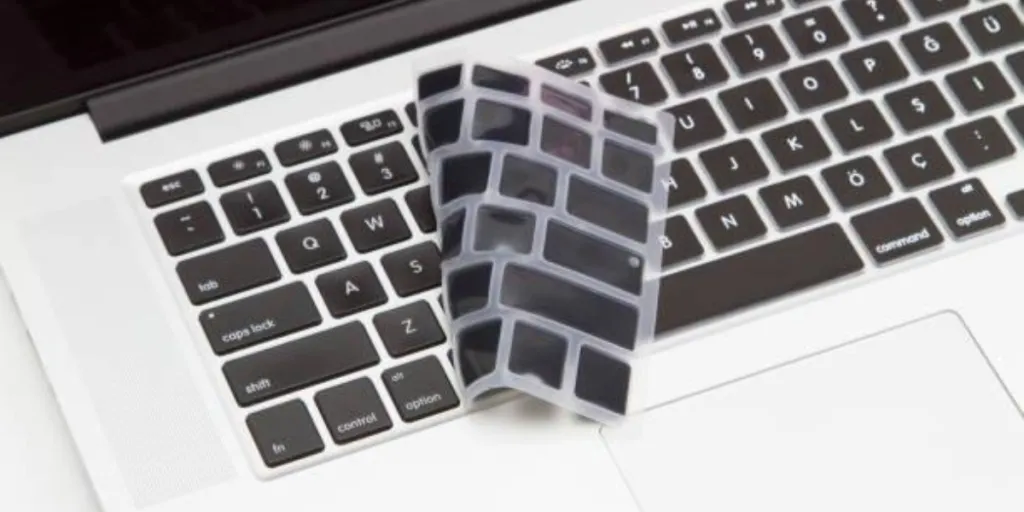While many users argue whether keyboard covers help or harm laptops, the answer is not straightforward. Some laptop owners may not appreciate these accessories, but others will choose them depending on their habits, laptop design, and usage environment.
But what do these keyboard covers do? And can businesses profit from them? This article will explain everything about keyboard covers and how to sell them in 2024.
Table of Contents
What are keyboard covers?
How big is the global keyboard cover market?
What are the different types of keyboard covers?
Factors to consider before stocking up on keyboard covers
Rounding up
What are keyboard covers?
Keyboard covers serve as barriers between keyboards and outside contact. Their main purpose is to protect keys from dust, liquid spills, general wear and tear, and crumbs, which helps extend the laptop’s lifespan.
Additionally, these accessories help stop keys from fading due to continuous use—usually, keys will look as fresh as when consumers first got their laptops.
But there’s more! Keyboard covers can do more than just protect. Consumers can also use them to enjoy a quieter typing experience, personalize their laptop’s aesthetics, and avoid unwanted keystrokes.
How big is the global keyboard cover market?
The benefits offered by keyboard covers haven’t gone unnoticed by consumers. That’s why the global keyboard cover market is booming! According to statistics, the market was valued at US $555 million in 2020. However, other reports suggest the market will grow at a 7% compound annual growth rate (CAGR) from 2021 to 2028.
The following factors help drive the keyboard cover market’s growth:
- The increasing use of portable devices like tablets and laptops is boosting demand for laptop covers.
- Consumers are becoming aware of the benefits of keyboard covers, and experts predict it will help fuel market growth.
The forecast also predicts that the North American region will lead the market as the biggest contributor.
What are the different types of keyboard covers?
Universal-fit covers

Almost all laptop keyboards follow the same keyboard pattern. And the only thing separating them is size, with the bigger ones having more keys. However, most laptops on the market come with standard keyboard sizes, making universal-fit covers one of the best options.
These keyboard covers are compatible with all standard-sized laptop keyboards, and manufacturers make them to fit most laptops. While consumers can get sufficient protection from these keyboard covers, they may not fit the user’s laptop keyboard.
Custom-fit covers

If universal-fit covers don’t cut it, the next best bet is custom-fit covers. These keyboard covers step in when consumers want specific designs for their laptop model. They also guarantee more precise fits.
In addition, custom-fit covers offer maximum protection, ensuring that all keys receive adequate coverage. There are simply no nooks and cracks in the custom-fit cover for dirt to get through.
Multifunctional covers
What if consumers want more than just keyboard protection? Businesses can cater to them with multifunctional covers. These variants boast additional features that are impossible to find on standard keyboard covers.
For instance, some multifunctional keyboards may include touchpad protection, extending their benefits to other laptop parts. Others may come with full cases to cover the entire laptop. And, if consumers want something more advanced, multifunctional keyboards can offer built-in numeric keypads/touch pads and backlit technology.
Ultra-thin covers
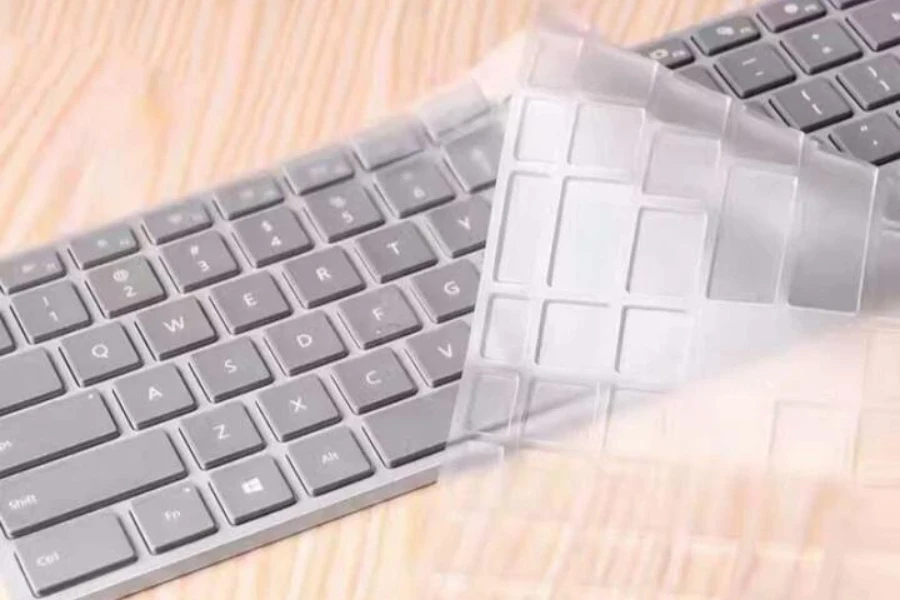
Thick keyboard covers can interfere with how users interact with their keyboards. While it may not affect everyone, some consumers may hurt their fingers from the added resistance. But, with ultra-thin covers, users can get comfort without sacrificing protection.
As the name implies, these types come with incredibly thin and lightweight designs. They provide little or no interference with the consumer’s typing. Plus, these keyboard covers are also portable.
Factors to consider before stocking up on keyboard covers
Material quality
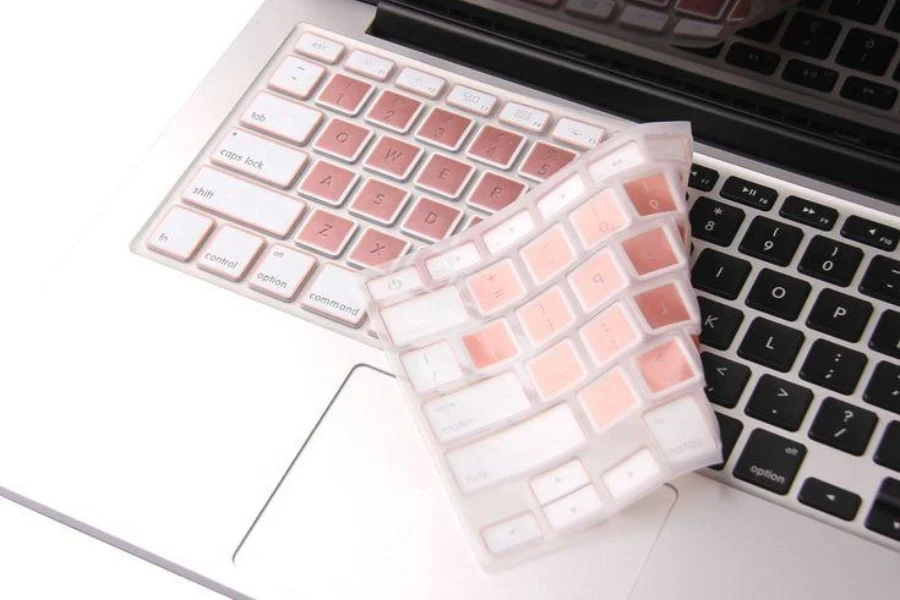
A keyboard cover’s role is to safeguard the laptop’s keys from potential damage, making durability a key consideration. However, this durability heavily depends on the material. Usually, manufacturers craft these accessories from thermoplastic polyurethane (TPU), silicone, and plastics, each offering unique advantages.
TPU boasts impressive flexibility and wear resistance, yet it may not excel against liquids. On the other hand, silicone is water-resistant and easy to install, though it falls short in terms of durability (compared to TPU).
Additionally, plastics are a breeze to clean but might lack the flexibility common with silicone. Although each material has pros and cons, the ideal choice depends on the target consumer.
Ease of use
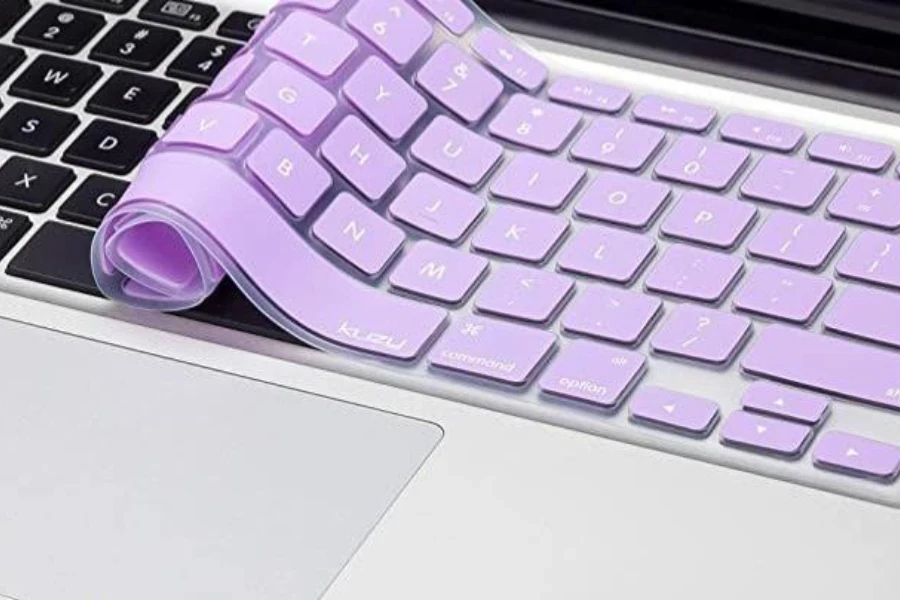
When choosing keyboard covers, businesses should prioritize user-friendliness. The ease of use directly influences how convenient it will be for consumers to use their laptops after installing their covers.
While protecting keyboards is important, it becomes counterproductive if the cover hinders the consumer’s ability to navigate their laptops effortlessly. User-friendliness also impacts how easy cleaning the keyboard covers will be, so be sure to stock up on variants that won’t get consumers frustrated.
Thickness and transparency
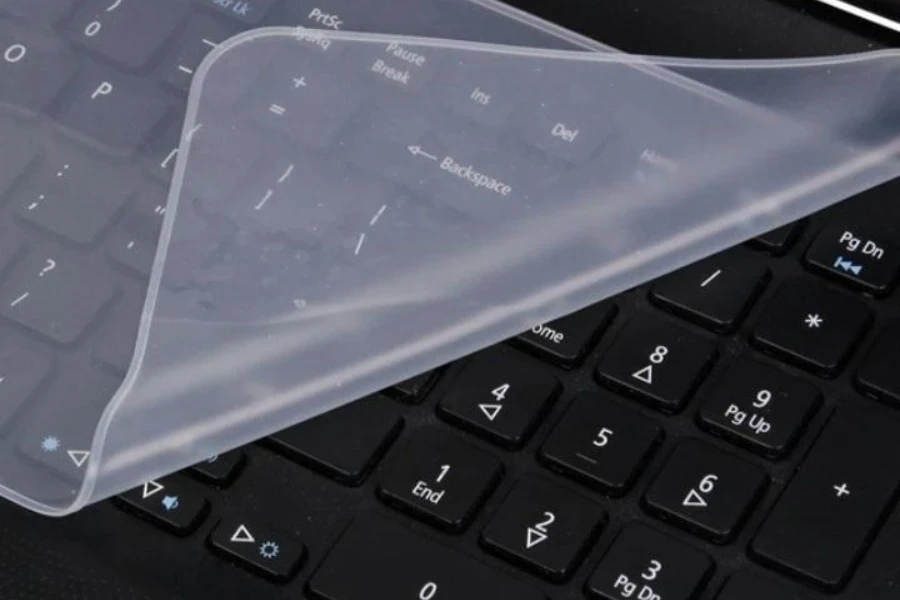
Keyboard covers need the perfect balance between thickness and transparency to be effective for most consumers. The cover’s density determines how thick it will be. If it’s too thick, it can negatively impact the user’s tactile feel, leading to discomfort.
On the flip side, if the keyboard cover is excessively thin, it becomes less durable and more susceptible to tearing. An ideal keyboard should strike a balance, being thick enough to withstand installation or removal without compromising durability, yet not so thick that it hinders the keyboard’s proper functioning.
Thickness also influences the keyboard cover’s transparency. An overly thick variant may become opaque, preventing consumers from navigating their PCs. However, transparency won’t be an issue if keyboard covers come with printed letters.
Rounding up
Offering consumers a high-quality keyboard cover is an excellent way to help consumers safeguard their laptop keys from potential damage sources. By considering factors like material quality, thickness/transparency, and ease of use, sellers can stock up on keyboard covers that suit their target consumers’ needs in 2024.
Universal keyboard covers have the highest versatility, while custom-fit variants cater to specific models. Multifunctional covers offer more protective features, and ultra-thin ones provide a solution for consumers bothered about possible resistance.
